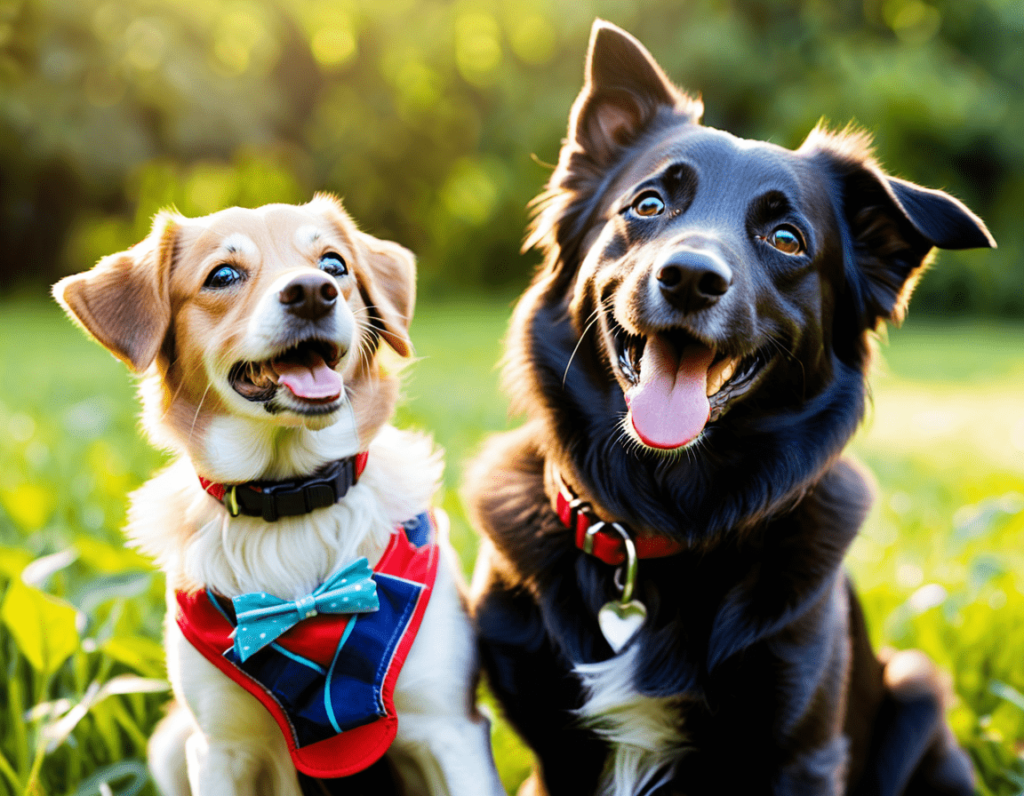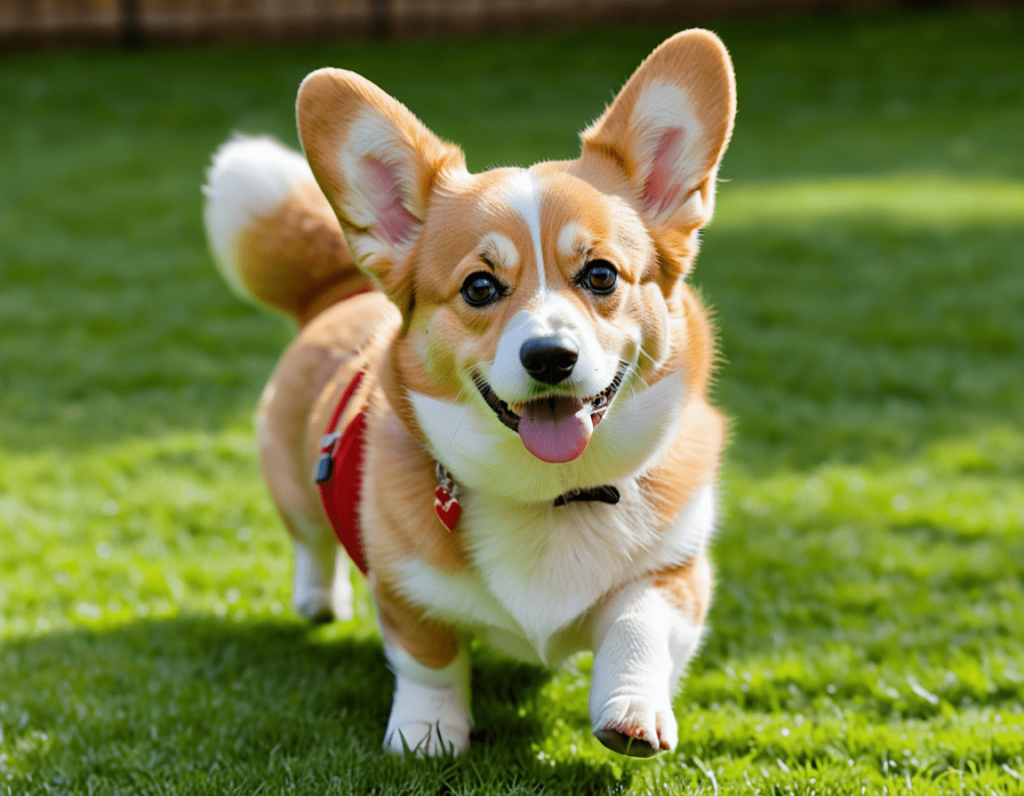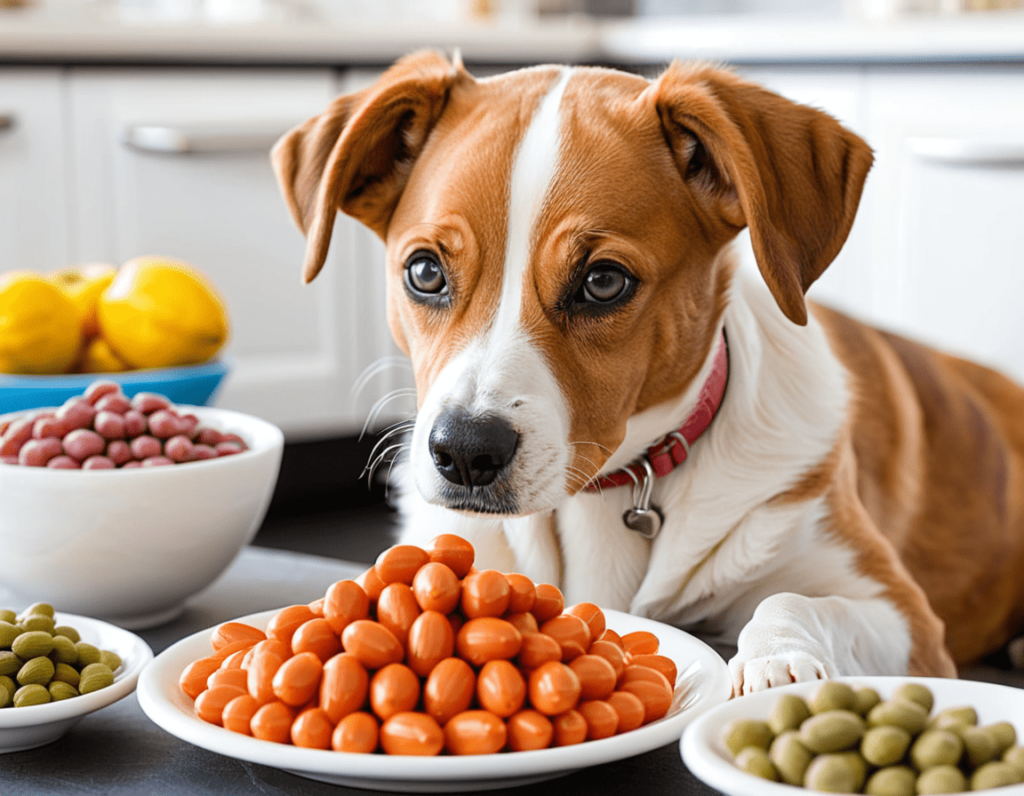
As a proud dog parent, you want nothing more than for your furry friend to be happy and healthy. But how can you tell if your dog is living their best life? Just like humans, dogs have their own unique ways of expressing joy. In this article, we’ll explore some clear signs that your dog is a happy camper. Plus, we’ll sprinkle in a bit of humour because, let’s be honest, our dogs are hilarious—whether they mean to be or not!
1. Wagging Tails: The Tail of Happiness!
One of the most obvious signs of a happy dog is a wagging tail. But it’s not just any wag. A happy dog’s tail will wag energetically, often whole-body wagging included! If your dog looks like they’re trying to take off with a helicopter spin, you know they’re feeling good. Just remember, a slow wag might mean your pup is a bit unsure—kind of like how you feel when you show up to a party where you only know one person.
2. Playfulness: The Life of the Party
A happy dog loves to play! Whether it’s a game of fetch, tug-of-war, or a friendly wrestling match with you, playtime is a great indicator of a content pup. If your dog keeps bringing you their favourite toy, they’re basically saying, “Hey, let’s have some fun!” Just be prepared for the occasional slobber bomb.
3. Relaxed Body Language: Chill Vibes Only
A happy dog often displays relaxed body language. Look for a loose body posture, ears that are not pinned back, and a soft expression. If your dog sprawls out on the floor like they just returned from a spa day, that’s a great sign! They might even let out a big ol’ sigh, which we like to think means, “Life is good, and I just had a treat!”
4. Joyful Barking: The Soundtrack of Happiness
Dogs communicate a lot through barking. If your dog barks with excitement when you come home or when they see a squirrel outside (because who doesn’t want to chase a squirrel?), that’s a good sign they’re happy. Just watch out for that high-pitched yip—it’s their version of a squeaky toy being overly dramatic!
5. Healthy Appetite: Bon Appetit!
A happy dog generally has a good appetite. If your pup gobbles up their food like they haven’t eaten in days, you can take that as a win! But if they’re turning their nose up at dinner, it could mean they’re either not feeling well or they’re holding out for that gourmet steak dinner you promised. Spoiler alert: most dogs don’t actually care about fine dining.

6. Cuddling: Snuggle Time is Happy Time
If your dog loves to cuddle up next to you, that’s a clear sign of happiness. Dogs are pack animals and feel safest when they’re close to their humans. If your dog is trying to turn you into a blanket burrito, that’s their way of saying, “I love you!” Plus, nothing beats the warmth of a snuggly pup, even if they occasionally kick you in their sleep.
7. Curiosity: Adventure Awaits!
A happy dog is often a curious dog. If your pup is eager to explore new sights and smells on your walks, it shows they’re enjoying life. Watch out for that inquisitive sniffer—it’s like having a personal detective on your walk, even if that means they want to stop and investigate every single bush!
8. Naps: Sweet Dreams, Pup!
Believe it or not, a happy dog loves their naps. If your dog can drift off in the middle of a room full of activity, it’s a sign they feel secure and relaxed. Just make sure you don’t accidentally step on their paw while tiptoeing around them—they’ll wake up with a look that says, “Seriously? I was dreaming about bacon!”
9. Excited Greetings: The Welcome Home Committee
One of the most heartwarming signs of a happy dog is their enthusiastic greeting when you come home. Whether you’ve been gone for five minutes or five hours, your pup will greet you like you just returned from a month-long expedition to the Arctic. Expect lots of tail wagging, jumping, and perhaps an adorable circle dance. Just be prepared for the occasional enthusiastic face lick—it’s their version of a welcome home confetti party!
10. Healthy Coat: Shine Bright Like a Diamond
A happy dog usually has a shiny, healthy coat. If your pup’s fur is glossy and free of mats or excessive shedding, it’s a sign they’re living their best life. Regular grooming not only keeps your dog looking fabulous but also helps strengthen the bond between you two. Plus, you get to say things like, “You’re one good-looking pup!” while they strut around like they’re on a runway.
11. Play Bow: Let the Games Begin!
When your dog drops their front legs and raises their back end, they’re not trying to show off their yoga skills; it’s a playful invitation! This “play bow” is a classic sign that your dog is ready for some fun. If your dog gives you this move, they’re saying, “Let’s play, human!” It’s basically the canine version of waving a flag that reads, “Fun ahead!”
12. Sleeping Positions: The Sprawl of Happiness
The way your dog sleeps can also indicate their happiness level. If they’re sprawled out on their back with their belly exposed, they’re in a state of pure bliss and trust. It’s as if they’re saying, “I feel so good that I’m exposing my most vulnerable parts! Bring on the belly rubs!” Just don’t forget—those belly rubs are mandatory when you see this position!
13. Social Butterfly: Friends are the Best!
A happy dog often enjoys the company of other dogs and people. If your pup eagerly greets new friends at the park, plays nicely with other dogs, and doesn’t hide behind you like they’re auditioning for a role in a spy movie, that’s a good indicator of a joyful dog. Just be careful not to let them run off with a stranger; they might think they found their new best friend!
14. Obedience: A Willing Partner
A happy dog is more likely to be obedient and responsive to commands. When your pup happily sits, stays, or comes when called, it shows they trust you and enjoy spending time with you. Of course, there might be an occasional “selective hearing” moment when they hear the treat bag rustling, but overall, a cooperative dog is a happy dog!
15. The Puppy Dog Eyes: A Classic
And finally, let’s talk about those infamous puppy dog eyes. If your dog gives you those big, soulful looks that could melt even the coldest hearts, they’re definitely in a happy place. Just be cautious—those eyes are often accompanied by a desire for treats, and we all know how convincing they can be. One minute you’re saying, “No more treats today,” and the next, you’re giving in like a soft-hearted marshmallow.
Final Thoughts: A Happy Dog is a Happy Life
In summary, knowing the signs of a happy dog can help you provide the best care for your furry friend and ensure they live a fulfilled life. From wagging tails and playful bounces to those snuggly moments and soulful stares, our dogs communicate their happiness in many delightful ways. So, next time your dog greets you with a joyful bark or a goofy grin, you can confidently know that they’re feeling pretty awesome. And remember, a happy dog is not just good for them; it makes your life a whole lot happier too!
Now go give your pup some extra love (and maybe a treat or two)! 🐶💖

Signs of a Happy Dog: FAQs
Here are some frequently asked questions about the signs of a happy dog, along with simple answers to help you better understand your furry friend’s happiness!
1. What are the most common signs that my dog is happy?
Answer: Common signs of a happy dog include:
- Wagging tail: An energetic wag often indicates joy.
- Playfulness: Eager participation in games and activities.
- Relaxed body language: loose posture and a soft expression.
- Excited greetings: enthusiastic welcomes when you come home.
- Cuddling: Seeking closeness and affection from you.
2. How can I tell if my dog is stressed instead of happy?
Answer: Signs of a stressed dog may include:
- Pacing or restlessness: Difficulty settling down.
- Tucked tail: A tail held low or between the legs.
- Avoidance behavior: Hiding or backing away from interactions.
- Excessive barking or whining: Vocalizations that seem anxious.
- Tense body language: Stiff posture or pinned ears.
If you notice these signs, it’s important to identify and address the source of your dog’s stress.
3. Can my dog be happy and still have moments of sadness?
Answer: Absolutely! Dogs can experience a range of emotions, just like humans. A dog can be generally happy but may have moments of sadness or anxiety due to changes in their environment, such as a move, loss of a companion, or changes in routine. Pay attention to their overall behaviour and look for patterns to determine their emotional state.
4. How important is playtime for my dog’s happiness?
Answer: Playtime is crucial for a dog’s happiness and well-being! It helps to release energy, reduces boredom, and strengthens the bond between you and your dog. Regular playtime can also promote physical health, improve mood, and provide mental stimulation.
5. What can I do to make my dog happier?
Answer: Here are some tips to enhance your dog’s happiness:
- Spend quality time together: Engage in activities they love, like walks, fetch, or tug-of-war.
- Provide mental stimulation: Use puzzle toys or teach them new tricks.
- Establish a routine: Dogs thrive on routine, so try to keep feeding, walking, and playtime consistent.
- Ensure proper health care: Regular vet visits, a balanced diet, and exercise are essential for their overall happiness.
- Give love and affection: Simple cuddles and belly rubs can go a long way!
6. What if my dog doesn’t show any of these happy signs?
Answer: If your dog is not exhibiting signs of happiness or shows signs of distress, it may be time to consult with a veterinarian or a professional dog trainer. Changes in behaviour can sometimes indicate health issues or behavioural problems that need addressing.
7. Is it normal for dogs to have different personalities regarding happiness?
Answer: Yes! Just like people, dogs have unique personalities. Some dogs may be naturally more exuberant and outgoing, while others might be calm and reserved. Understanding your dog’s individual personality can help you recognise what happiness looks like for them.
8. Can my dog be happy without socialising with other dogs?
Answer: Absolutely! While some dogs enjoy socialising with other dogs, others may prefer one-on-one time with their humans. As long as your dog receives love, attention, and mental stimulation, they can be perfectly happy without frequent interaction with other dogs.
Conclusion
Understanding the signs of a happy dog is essential for every dog owner. By recognising your dog’s behaviour and emotional cues, you can ensure they lead a joyful and fulfilling life. If you have any other questions or concerns about your dog’s happiness, don’t hesitate to consult a veterinarian or a professional dog trainer for personalised advice!


